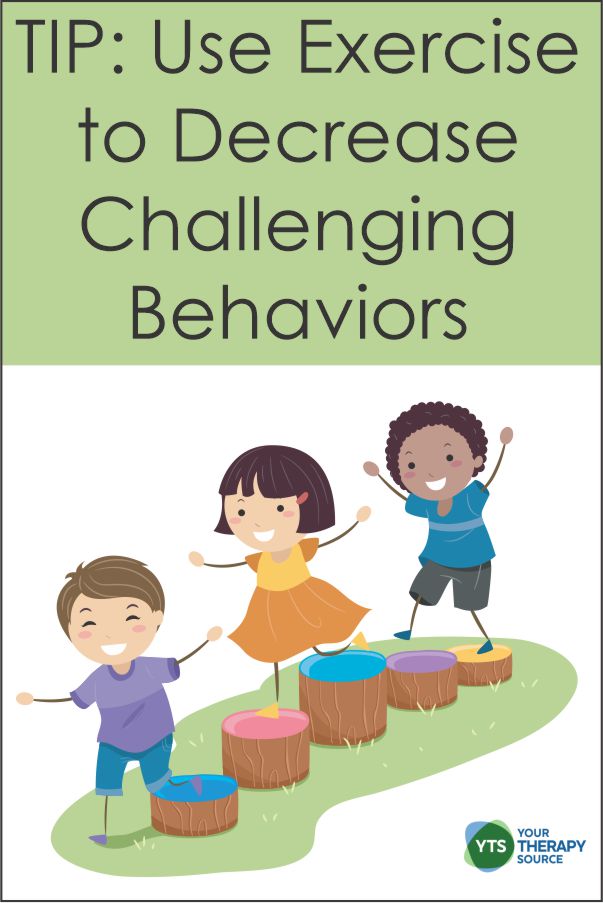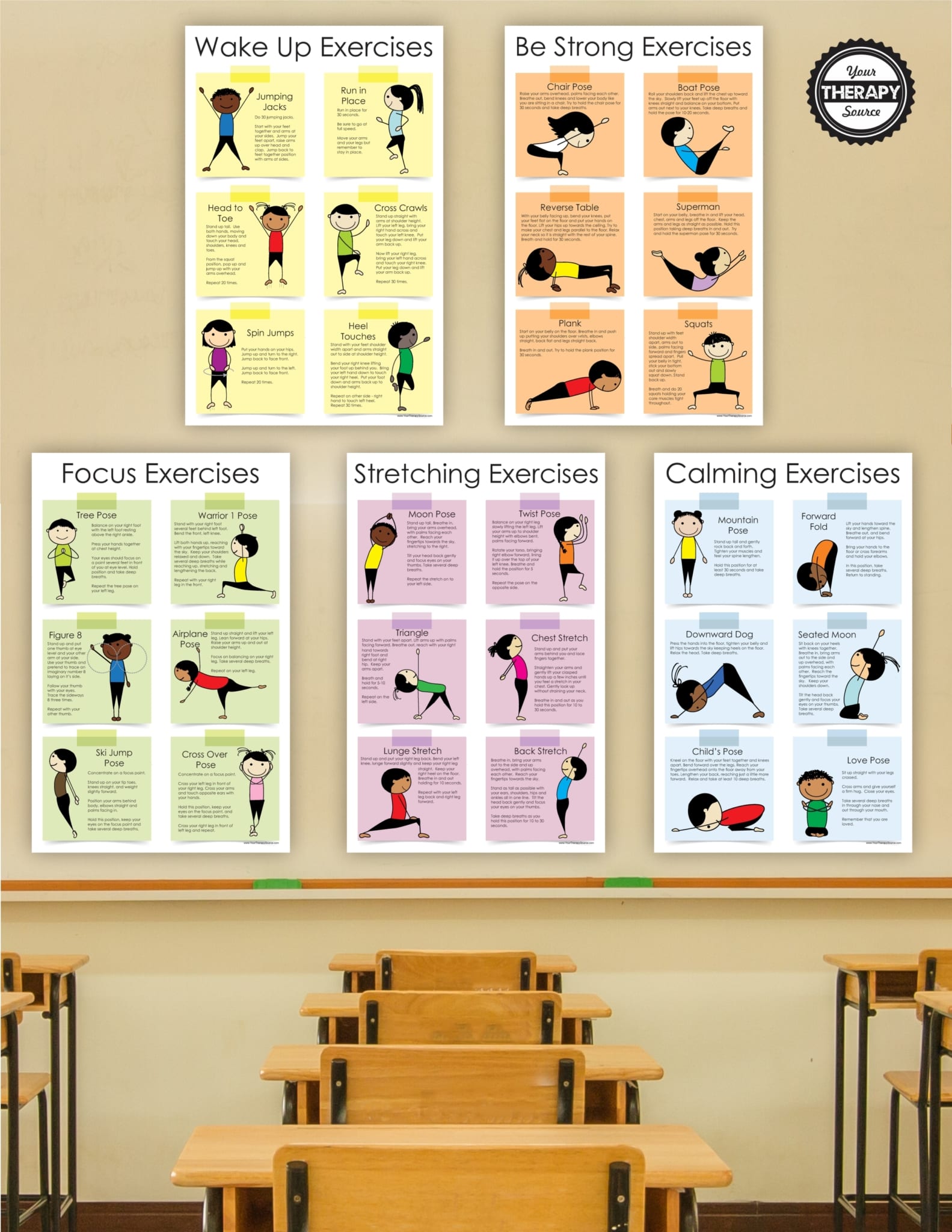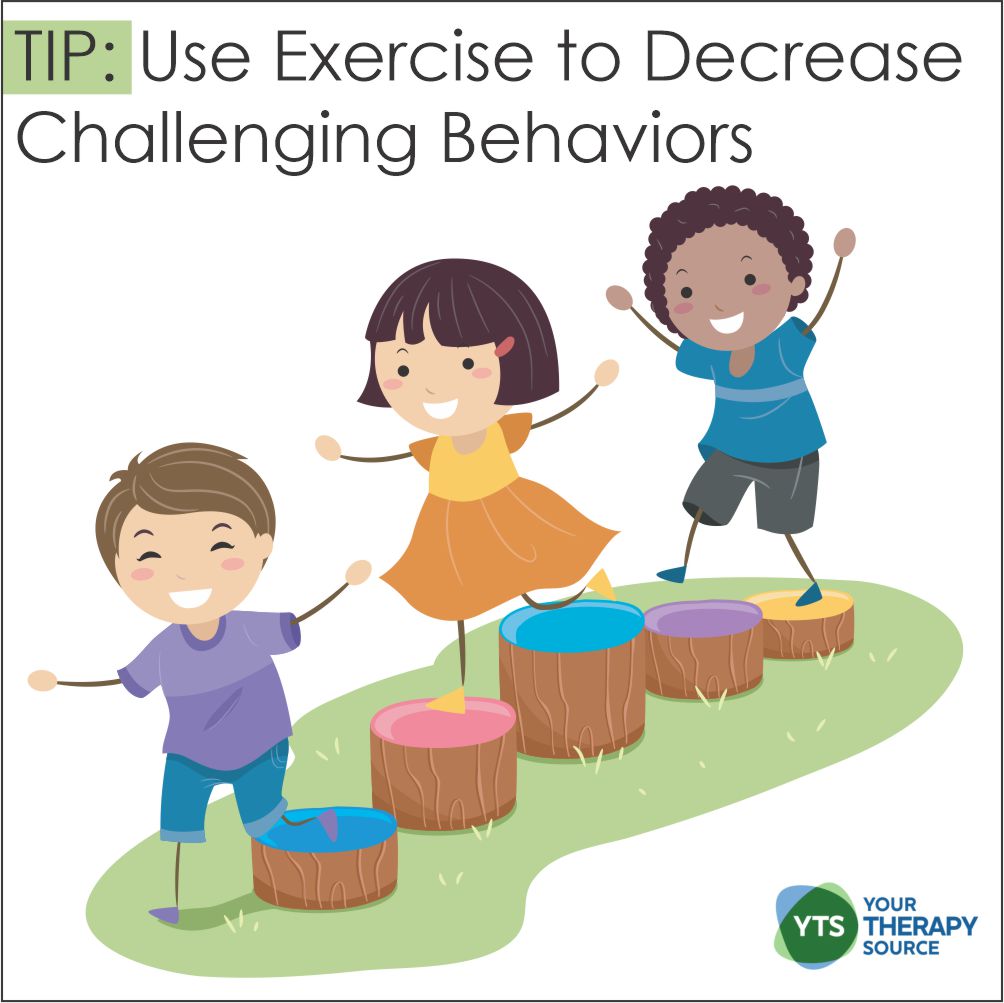Exercise to Reduce Challenging Behaviors

If you are a classroom teacher or support staff, you probably have observed students with challenging behaviors who are disruptive, destructive, or disengaged from instruction. It doesn’t have to be a group of students, either. Unfortunately, even just one single child can disrupt the entire classroom’s routine, transitions, and learning time. School staff can sometimes feel unprepared and frustrated in these types of situations. If these challenging behaviors can be reduced it can be helpful for the whole class. One option, is to use exercise to reduce challenging behaviors in the classroom and home.

Exercise Posters for Kids – Printed
WHAT DOES THE RESEARCH SAY ABOUT EXERCISE TO REDUCE CHALLENGING BEHAVIORS?
Recent Study on Exercise to Reduce Challenging Behaviors Methodology
Pediatric occupational or physical therapists may recommend physical activity as part of a student’s day to help with emotional regulation. It may be called a sensory break, sensory diet or motor lab. These recommendations are based on research on how exercise can affect the brain. One recent small study explored using exercise and/or visual supports as an antecedent to prevent challenging behavior in two young preschool aged boys.
The study had the boys participate in intervention sessions on the school playground or the indoor gym right before the class’s scheduled morning circle time. These interventions ranged from 10-14 minutes depending on the child. There was large playground equipment such as slides, swings, ride on toys for outdoor exercise time. Indoor time consisted of a mini trampoline, trikes, scooter boards, balls, and more. Visual supports were also used which included a token board, First-Then visual, and a choice board with visual representations of activities. During circle time, visual supports were also used to reinforce behavior expectations.
After exercise time the students joined teacher-directed circle time for 10-20 minutes in duration. Observation sessions occurred during the first 10 minutes. The observers were recording challenging behaviors which was broadly defined as any repeated pattern of behavior that interferes with or is at risk of interfering with learning or engagement in pro-social interactions with peers or adults. Out of seat behaviors were recorded along with behaviors such as aggression, noncompliance, verbal interruptions, etc. Appropriate engagement was also measured.

Data Collection for Special Education Templates – EASY
Results of the Study
Following data analysis the researchers reported the following results on using exercise as an antecedent to prevent challenging behaviors:
- antecedent exercise alone may be effective in reducing particular challenging behaviors for certain children in specific contexts.
- children with more persistent patterns of challenging behavior throughout the school day may require more targeted interventions that address behaviors in real time, in addition to antecedent interventions such as exercise and visual supports.
The researchers concluded that physical exercise that is intentionally scheduled before seated or teacher-directed classroom activities may result in a decrease in challenging behaviors and an increase in engagement for some young children. Visual supports may also be necessary.
TIPS FOR REDUCING CHALLENGING BEHAVIOR USING EXERCISE
School staff can help to reduce challenging behavior by using exercise as an antecedent to instruction.
- Scheduling 10-15 minutes of physical exercise before class can have positive effects on young children’s behavior and engagement in the classroom. It could be time for some jumping jacks, hopscotch or other energizing activities!
- To keep pupils engaged and active, a few simple physical activities can be incorporated into lessons throughout the school day. From teacher-led movements to stationary exercises after recess or P.E., short bursts of activity are certain to help students stay focused while also promoting healthy habits in their daily lives.
- Foster your young children’s physical health and development with dynamic motor play in a supportive environment outdoors if possible. Adults can provide guidance, instruction on techniques, and constructive feedback to ensure that the activities are engaging – all essential elements for successful antecedent exercise interventions.
- Provide choices for the children to participate in active play.
- Use data to determine the best length of time for the exercise intervention. If children become disengaged or disinterested, provide encouragement, change the activity, or reduce the exercise time.
- Provide and implement the use of visual supports during exercise time and classroom instruction to support positive behaviors.
Creating successful behavior support plans for children with persistent challenging behaviors requires taking a customized approach that involves both proactive and reactive strategies. By tailoring the plan to meet each child’s individual needs, you can set them up for success!
Reference
Winchester, C., Barton, E. E., Trimlett, G., & Ledford, J. R. (2022). Preventing Challenging Behavior Using Physical Activity With Young Children. Topics in Early Childhood Special Education, 02711214221080915.
RELATED POSTS
Autism Exercise Programs Help Reduce Stereotypic Behaviors



